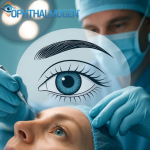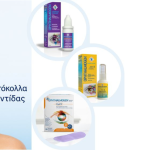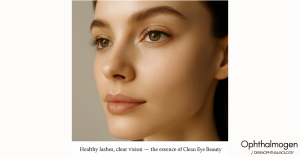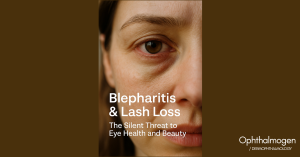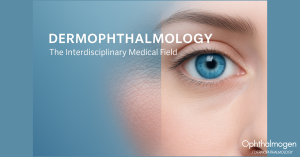
Introduction
Burning and stinging in the eyes are among the most common complaints in eye clinics. While many attribute this discomfort to fatigue or simple dryness, a chronic condition of the eyelids — blepharitis — is often the real cause.
What is Blepharitis?
Blepharitis is a chronic inflammation of the eyelids, caused by:
- Dysfunction of the meibomian glands (Meibomian Gland Dysfunction – MGD) leading to excess or altered oil secretions.
- Growth of bacteria and microbial biofilm at the base of the eyelashes.
- Infestation with the mite Demodexfolliculorum, which lives in eyelash follicles.
Why Do the Eyes Burn?


Other Symptoms That Accompany Burning
- Red and inflamed eyelid margins
- Foreign body sensation or “sand in the eyes”
- Itching or soreness
- Excessive tearing despite dry-eye symptoms
- Thinning or loss of eyelashes

The Role of Dermophthalmology
The emerging discipline of DermOphthalmology combines dermatology and ophthalmology, addressing the eyelids as skin that protects the eye. Just like facial skin, the eyelids need targeted care for both health and aesthetics.

Conclusion
Blepharitis is a chronic condition that should not be ignored. Burning and stinging are warning signs that the ocular surface needs proper care.
With consistent hygiene and the right products, symptoms can be reduced significantly, restoring comfort and improving quality of life.
Dermophthalmology is the new medical specialty we have introduced (learn more at www.dermophthalmology.com)
The burning sensation results from a combination of mechanisms:
- Unstable tear film
When the meibomian glands are blocked, the lipid layer of the tears breaks down → faster evaporation → dryness and stinging.
- Inflammatory response
Bacteria and Demodex trigger chronic inflammation → irritation of the nerves of the eyelids and ocular surface → sensation of burning or pain.
- Accumulation of toxins and debris
Biofilm, makeup residues, and environmental dust accumulate → microtrauma and persistent hypersensitivity.

How is Blepharitis Managed?
Management is long-term and daily. Ophthalmologists typically recommend:
- Warm compresses → to melt meibomian gland secretions and improve oil flow.
- Gentle eyelid massage → to remove blockages and restore lipid balance.
- Eyelid cleansing with specialized products (not soap or plain water).
- Daily eyelid hygiene to control Demodex and biofilm.

Ophthalmogen Protocol for Blepharitis
For daily relief and reduction of burning:
- Ophthalmogen Eye10 compresses → 20 minutes/day for 1 month, then 2–3 times/week.
- Ophthalmogen Gel → eyelid massage morning & night (30 seconds).
- Ophthalmogen Spray → 2–3 spritzes throughout the day.
- OphthalmogenMeiboEvacuators→ once a year in chronic situations
Result: Clean Healthy eyelids, less inflammation, more stable tear film.


